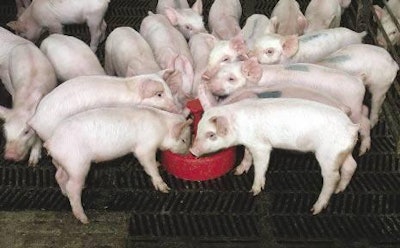
Europe's pig industries have lived since the end of December 2005 without the widespread use of in-feed antibiotic growth promoters. There has been a rapid learning curve for nutritionists and producers alike on how to maintain the health and performance of the pigs under the new circumstances. The period of education has yielded some excellent alterative strategies to deploy.
We now have many tools in our nutritional box to provide consistent gut health in all classes of weaned and growing pigs. However, in Europe at some point we may have to come to terms with the removal of another aid to gut health, in the form of zinc oxide in post-weaning feeds. It seems certain that the European Union will ban zinc oxide at pharmacological levels from feeds given to pigs, because of concerns over pollution of land and water when zinc is excreted in the manure.
This ban will be a considerable challenge when coupled with our need to reduce antibiotic use in farmed livestock even further. But we may be helped by organic acids not only in the feeds, but also in the drinking water. There is evidence from trials that water acidification can be of benefit even where the feed for the same animals is acidified. What is more, the twin approach has proved an effective replacement for the in-feed use of zinc oxide.
The combined use of in-feed acidification with water acidulants will provide a technical answer. An accumulated knowledge base from recent research is ready to offer solutions.
An example of the effects we have measured is given in Figure 1. It illustrates some on-farm trial work with water acidification in Spain. This involved a large farm with a chronic problem of post-weaning diarrhoea and mortality. A programme of acidifying the water started in May 2003 and unit performance improved progressively over the ensuing months. As the graph shows, the use of the acid blend in the drinking system not only gave a better growth rate, but also the mortality level after weaning returned virtually to zero.
Something else is particularly worth noting about this large-scale study. Zinc oxide had been removed from inclusion in the unit's post-weaning feeds as from January 2003. It was immediately after this time that the problems with mortality and poor growth appeared on the farm. When the water acidification went in, this clearly provided a workable alternative to the use of zinc oxide for health control and continued weight gains.

















